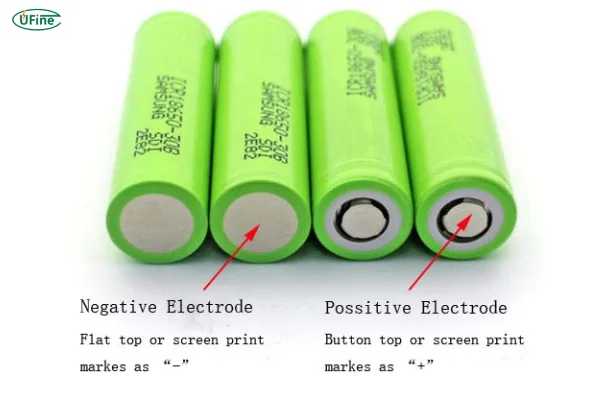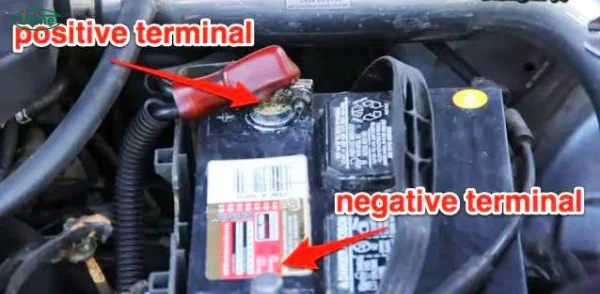Part 1. What is the end of a battery?
When most people talk about the end of a battery, they often refer to the point at which the battery no longer works or can no longer hold a charge. However, in the world of battery technology, the end of a battery can mean something very specific: the battery terminals. The end of a battery is where the flow of electrical energy enters and exits the battery, facilitating the power needed for devices to operate.
In this article, we will explore what the end of a battery truly is, specifically focusing on the battery terminals. These terminals are crucial for the battery’s function, as they determine how the battery connects to devices and how efficiently it performs. We will also discuss how to distinguish between the positive and negative terminals and the role these terminals play in the life and performance of your battery.
Part 2. What Are battery terminals?
The end of a battery refers to the two electrical contacts located on opposite ends of the battery: the positive and negative terminals. These terminals allow for the connection of the battery to a device or circuit. The positive terminal is the point where electricity leaves the battery, and the negative terminal is where the current returns.
-
Positive Terminal: Marked with a “+” sign or often colored red, the positive terminal is where the battery’s power exits and flows into the device or circuit.
-
Negative Terminal: Marked with a “-” sign or colored black, the negative terminal is where the current returns after powering the device, completing the circuit.
When we talk about the end of a battery, we’re referring to the points where this current is transferred, making them vital for the battery’s function and performance.
Part 3. How to distinguish the positive and negative terminals of a battery?
It’s essential to know how to distinguish between the positive and negative terminals at the end of a battery, especially when you’re working with different devices or battery types. Here’s how you can tell the difference:
-
Markings and Symbols: Most batteries have clear markings to indicate the positive (+) and negative (-) terminals. The positive terminal often has a “+” symbol or is marked with red. The negative terminal is usually marked with a “-” symbol or is colored black.
-
Battery Size and Shape: On certain types of batteries, like AA or AAA batteries, the positive terminal is usually the protruding end (the one with a bump), while the negative terminal is flat.
-
Battery Connector Types: For larger batteries, such as those used in vehicles or power tools, the positive terminal will typically have a larger post or a more secure attachment point for cables, while the negative terminal will often have a smaller post or attachment point.
-
Voltage Indicators: In more complex batteries, such as Li-ion or NiMH batteries, manufacturers often provide voltage ratings on the terminals, with the positive terminal having a higher potential than the negative one.
Properly distinguishing between the positive and negative terminals is crucial, as connecting a battery the wrong way can result in damage to your devices or even cause a safety hazard.
Part 4. How the end of a battery affects performance
The end of a battery is where the magic happens—where the stored energy is tapped into and sent to power a device. Therefore, the battery terminals play a significant role in the overall performance of the battery. If the terminals are damaged, corroded, or poorly connected, the flow of electricity can be hindered, leading to various issues. Here’s how the end of a battery (the terminals) affects its performance:
-
Electrical Resistance: Dirt, corrosion, or wear on the terminals can lead to increased electrical resistance. This can slow down the flow of current, reducing the battery’s efficiency and draining it faster.
-
Current Flow: The positive and negative terminals ensure that current flows correctly from the battery to the device and back. A poor connection or faulty terminal can cause devices to malfunction or fail to power up.
-
Safety Risks: A damaged terminal at the end of a battery can pose safety risks, including overheating, leakage, or even explosions, especially with high-capacity batteries. It’s essential to maintain the integrity of the terminals to prevent such hazards.
-
Battery Lifespan: Proper care of the end of a battery—particularly the terminals—can extend the battery’s lifespan. Regular cleaning and inspection of the terminals can prevent early failure and help the battery last longer.
Part 5. Common types of battery terminals
Not all battery terminals are the same, and the type of terminal used depends on the battery’s size, application, and energy requirements. Here are some of the most common terminal types you will encounter at the end of a battery:
1. Snap Terminals
Snap terminals are commonly found on smaller batteries such as those used in toys, flashlights, or other compact devices. These terminals are equipped with metal clips that “snap” into place when connected, ensuring a solid electrical contact.
2. Post Terminals
Post terminals are commonly used in automotive batteries. These terminals feature metal posts on top of the battery, where cables are connected via clamps or bolts. They are ideal for high-power applications, such as starting car engines.
3. Lug Terminals
Lug terminals are typically used in industrial batteries or high-capacity systems. These terminals consist of a metal ring that attaches to a bolt or screw, providing a reliable and secure connection for larger batteries.
4. JST Connectors
JST connectors are often found in smaller rechargeable batteries, such as those used in drones and power tools. These compact connectors are well-suited for situations where space is limited, and they offer a secure electrical connection.
Types of Battery Terminal Connectors
Part 6. Maintaining the end of a battery for longevity
Proper maintenance of the end of a battery, specifically its terminals, is crucial for maximizing performance and lifespan. Here are a few maintenance tips to ensure the battery terminals remain in top condition:
-
Keep Terminals Clean: Dust, dirt, and grime can accumulate on the end of a battery, leading to poor performance. Clean the terminals with a soft cloth and a mild cleaning solution to keep them free of debris.
-
Check for Corrosion: Corroded terminals can cause poor electrical connections and lead to energy loss. If you notice any corrosion, clean the terminals with a mixture of baking soda and water to neutralize the corrosion.
-
Tighten Loose Connections: Loose terminals can result in intermittent power delivery and increased wear. Ensure that all connections are secure and tight to ensure smooth energy flow from the battery.
-
Use Battery Terminals Protectors: Applying a layer of terminal grease or anti-corrosion gel can protect the end of the battery from the elements and prevent corrosion.
The Battery Terminal Blues: Understanding Corrosion and How to Fix It
Part 7. Conclusion
The end of a battery—its terminals—are far more than just connectors; they are vital to the battery’s overall performance and longevity. These terminals control how energy flows into and out of the battery, ensuring that devices operate as intended. Understanding the end of a battery, how to distinguish between the positive and negative terminals, and maintaining them properly will help extend the life of your battery and ensure that your devices continue to work efficiently.
By taking proper care of the battery terminals and ensuring they are clean, secure, and corrosion-free, you can improve the efficiency and safety of your battery-powered devices. So, the next time you use a battery, take a moment to appreciate the end of a battery—the critical part where all the energy exchange happens.
Related Tags:
More Articles

What Battery Powers Your GoPro?
Learn all about GoPro batteries - compatibility, runtime, charging tips, and how to extend battery life for longer shoots.
What Is a Disk Battery? A Simple Guide for Non-Tech Users
A disk battery is a small, round cell used in watches, remotes, and other electronic devices. It delivers steady power for compact, low-drain devices.
What Battery Powers a Space Heater?
Discover the type of battery that powers space heaters and learn how to choose the right one for efficient heating in your home or office.
What Is an LR14 Battery? Learn About This C-Size Cell
The LR14 battery, also known as a C battery, delivers steady power. Learn its specs, uses, lifespan, and how it compares to other battery types.
Watch Battery Dimensions Chart: Sizes, Voltages, and Equivalents Explained
Understanding watch battery dimensions helps you choose the right size, voltage, and equivalent model to keep your watch running safely and smoothly.





